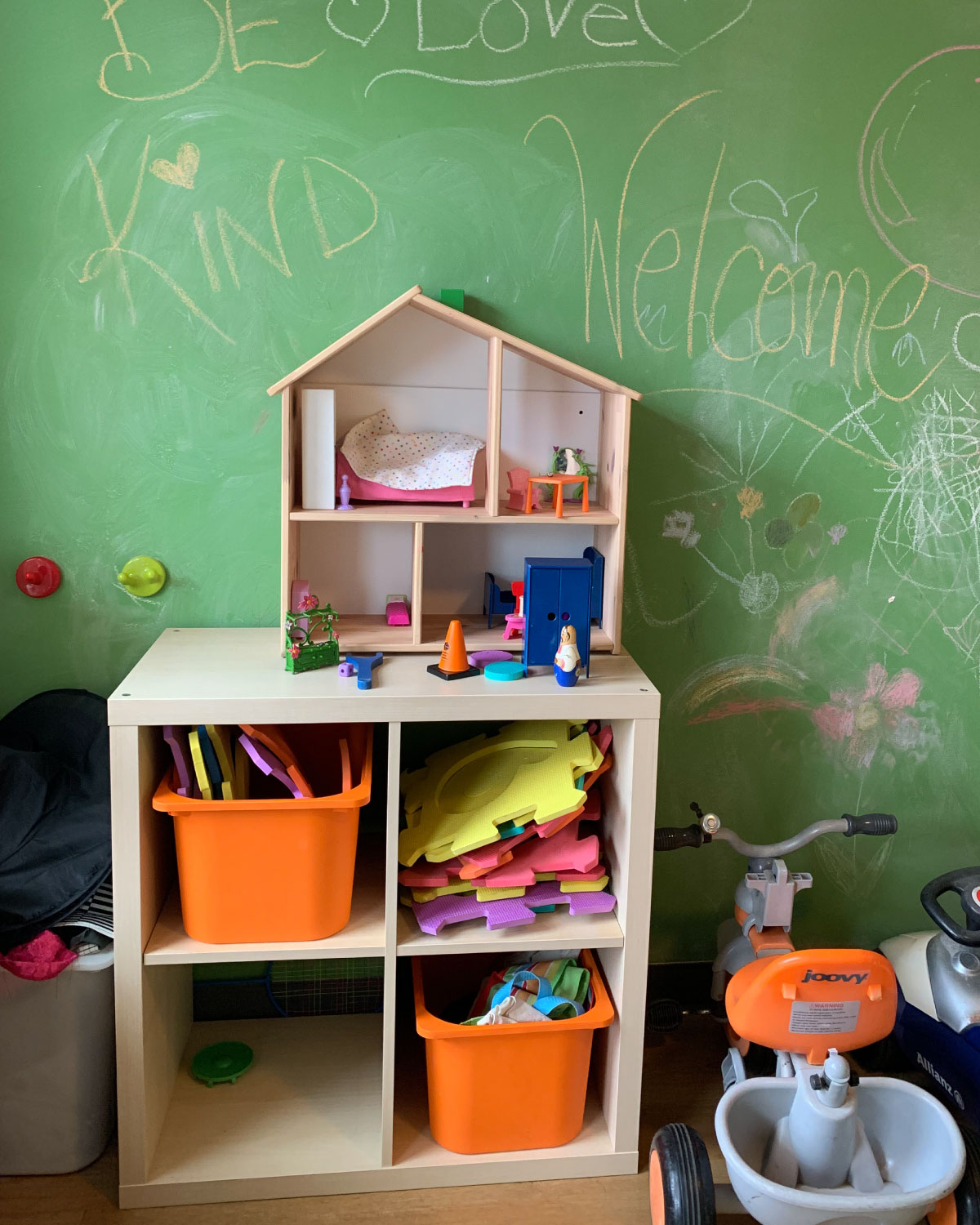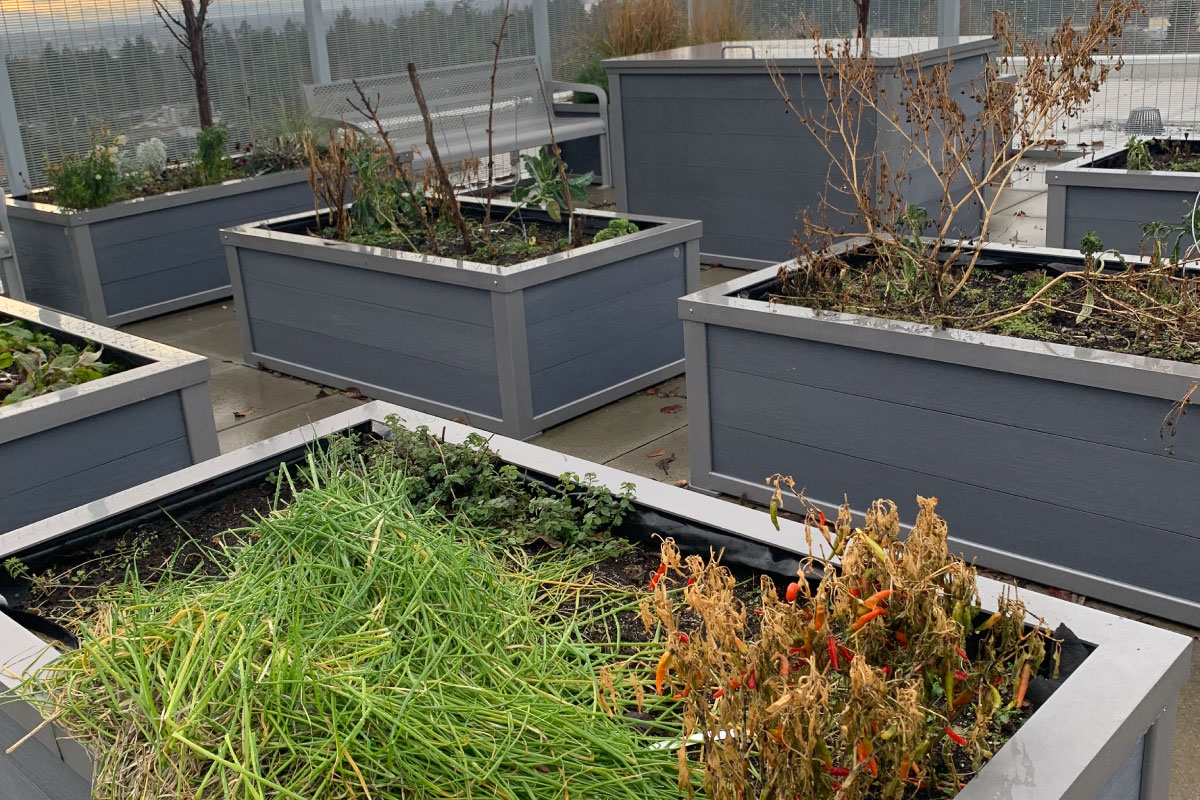Security & Sense of Safety | Convenience & Efficiency | Home-Like & Healing Environment | Physical Comfort | Community Support & Social Life
Homelike & Healing Environment
“Access to nature is a form of therapy. Women who have experienced violence are grappling with many emotions and challenges that makes access to nature in the place that you live very important (i.e., court yard, roof top gardens). It is so important to be able to focus on a distraction like growing vegetables to give life perspective.”
– Woman with Lived Experience
Women-centred housing is a warm, welcoming, and joyful environment, that feels non-institutional and a place where women and their children experience a sense of belonging, with control over their space allowing them to express their identity and culture in their home. Women and their children after fleeing violence need to regain their sense of empowerment, dignity, and belonging which often were taken away from them in their past violent home environment. Spatial design that enables personalization, access to private and personal space, cultural expression, connection to nature/natural elements, and a welcoming and warm ambiance using joyful colours, materials, texture, and lighting will support healing and sense of home.

Figure 18: Children’s Play Room, YWCA Cause We Care site
Design Strategies
Personalization of Space
Providing space for self-expression and having autonomy of how to decorate living space enhances sense of home for women and children.
Cultural Expression
Providing opportunities for women and children to express their identity and culture in their housing spaces empowers them. To allow for cultural expressions, each housing provider should work with their resident community to reflect their cultural needs in their housing spaces.
Nature and Natural Elements
Connection to nature and natural elements (e.g., greenery, natural light) has been an important factor in improving mood and contributing to a sense of home.
Material, Colour, Texture, Light
One of the strategies to improve homelike and healing environment is through lighting, and using materials, colours, and texture that are non-institutional.
Personal Space and Privacy
To feel a sense of home, women and their families need to have access to their private, personal, quiet, and comfortable space where they can rest, meditate, or focus on a task/work if they want to.
Strategy
Action
Personalization of Space
Providing space for self-expression and having the choice and autonomy of how to decorate their living space enhances sense of home for women and children.
- Unit: Built-in shelves for plants, frames, etc. inside the unit.
- Unit: Identifiable front door (e.g., different door/doorframe colours).
- Unit and common area: Rotating art display space (e.g., chalk boards, pin-up boards) so that women and children can express themselves, post on them and communicate with other neighbours.
- Common area: Allow for art works on the walls in the hallways and other shared spaces to avoid institutional feelings of plain walls.
Cultural Expression
Providing opportunities in the housing spaces for women and children to express their identity and culture empowers them. To allow for cultural expressions, each housing provider should work with their resident community to reflect their cultural needs in their housing spaces.
- Common area: On-site garden to support cultural/medicinal plants.
- Common area: Outdoor space to accommodate cultural activities (e.g., sweat lodge or fire ceremony) (CMHC, 2019a).
- Common area: Allow for smudging using a safety protocol in the housing. Please see an example of a Smudging Protocol in this resource by McMaster University.
Nature & Natural Elements
Connection to nature and natural elements (e.g., greenery, natural light) has been an important factor in improving mood and contributing to a sense of home.

Figure 19: Garden beds on the shared rooftop garden at YWCA Pacific Spirit Terrace building for the use of residents
- Unit: Access to a balcony or private patio with space for plants and small gardening beds and experience the fresh air and sunshine in a private outdoor space.
- Unit: Easily used private open space (e.g., balcony) that allows for easy furnishing in terms of geometry and dimensions (City of Vienna, 2013, p. 89; Donnelly et al., 2022).
- Common area: Allocate on-site gardens and integrate storage of equipment, potting mix, and gloves into the courtyard or garden space (Donnelly et al., 2022).
- Connection to neighbourhood: Access to green spaces and parks.
Material, Colour, Texture, Light
One of the strategies to improve homelike and healing environment is through lighting, and using materials, colours, and texture that are non-institutional.

- Unit and common area: Color can be one of the easiest and most cost-effective ways to freshen a space. Selecting the proper colour requires an understanding of how a space is to be used (e.g., low- or high-traffic area), what mood the space should evoke, and whether the space is intended for social or group purposes or for quieter, more reflective uses (Light et al., 2022).
- Unit and common area: Options for different colour themes in the suites and common areas. Use joyful colours in the common areas and children’s playrooms but avoid using bright colours in the units as they may be overstimulating for some people. Also, avoid large areas of white wall to prevent institutional feelings.
- Unit and common area: Too many warm colours result in hot tempered psychological state whereas too many dull colours triggers depression and anxiety (Rian & Sassone, 2012). For more inspiration about the impacts of colours and how to use them in the space, please see the Paint and Colour Section of the Trauma-Informed Design for Homeless Population publication by HOK.
- Unit and common area: Cozy, warm, and natural materials (e.g., wood).
- Unit and common area: Textured material to stimulate visual curiosity. Avoid too much complexity in the texture of materials as they may be overstimulating.
- Unit and common area: Warm lighting for a welcoming environment.
Personal Space and Privacy
To feel a sense of home, women and their families need to have access to their private, personal, quiet, and comfortable space where they can rest, meditate, or focus on a task/work if they want to.

- Unit: Study space/desk space to support working from home, homework, and hobbies.
- Units: Duplexes work well for a woman with older children and multigenerational families by providing personal space for them.
- Unit: Control over visual connection.
- Unit: Built-in niche/nook/alcove for escape in both the shared spaces and in the units.
- Unit: Spaces to store personal and confidential paperwork (e.g., legal documents) that can be locked and out of reach of children.
- Unit: When the units are on the courtyard level, divide it from the shared space using panels for more privacy.
- Unit and common area: Acoustic considerations in units and common areas (Please refer to the “Physical Comfort” Section to learn more about the design actions to enhance privacy and comfort through “Noise and acoustic control”).
- Unit and common area: units’ front doors can be recessed in a niche to provide a feeling of privacy.
- Unit and common area: Ritual spaces to journal, smoke, and meditate (Grabowska et al., 2021). For example, the Cultural Room at Amber’s House building of EFry in Prince George is a holy and quiet room for women to mediate, pray and have a healing session.
- Common area: Smoking was identified as a reality for many of the women with experiences of violence. By having a designated smoking area we increase safety in the units and eliminate the need for residents to leave the premises to smoke. One of the most feasible and cost-effective ideas for smoking space is an outdoor space (preferably covered such as a gazebo) which does not require ventilation. The outdoor smoking space should be located further away from the children’s play area and the units’ windows.

